We’re here for you during these uncertain times. Our support team is always available - contact us anytime, 24/7!
CA Leader Ideas for Traffic & Bumpy Roads
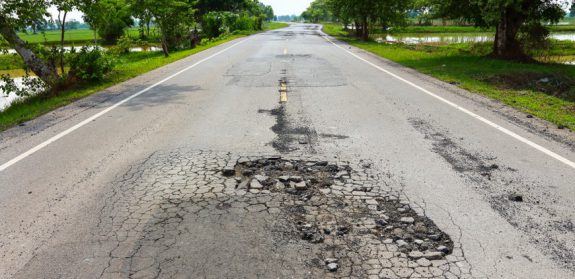 There are a lot of different kinds of problems that plague California leaders today. Road conditions is one that stands out for the majority of the state and traffic is one that seems to affect the larger cities, though some of the smaller ones really struggle with having traffic problems as well.
Derived from too many people in a space that was designed for far fewer of them, leaders cannot just simply take out the population or ask Californians to leave the state. CA leaders are figuring out how to make traffic flow properly and keep roads in reasonable repair not just to decrease road rage, but to help decrease accidents.
There are a lot of different kinds of problems that plague California leaders today. Road conditions is one that stands out for the majority of the state and traffic is one that seems to affect the larger cities, though some of the smaller ones really struggle with having traffic problems as well.
Derived from too many people in a space that was designed for far fewer of them, leaders cannot just simply take out the population or ask Californians to leave the state. CA leaders are figuring out how to make traffic flow properly and keep roads in reasonable repair not just to decrease road rage, but to help decrease accidents.
Bad Roads and More Drivers Equal More Accidents and Tickets
One of the biggest problems with bumpy roads and too much traffic is that the ratios of accidents and tickets are higher than in many other areas. If you've received a ticket for violating a traffic law or causing an accident, you can go to online traffic school as a ticket dismissal course. There are in-person options for traffic school, as well, but it's much nicer to avoid all of that sitting in a classroom and just focus on getting through the schooling from the comfort of your own home. That way you don't need to worry about travel time, available space, or anything else that can come along with attending in person. In some cases you can successfully fight a ticket because of road conditions, traffic problems, and other serious concerns. For the times that you do receive a ticket that you can't get overturned right away, traffic school online can solve the problem. That way you won't get points on your driver’s license and you won't have to see your insurance rates go way up because of a ticket. It's clear that there's a lot of traffic in California and that some of the roads can be improved so they aren't so bumpy, but that doesn't mean every ticket issued will be thrown out or easily dismissed.How California Leaders Are Helping
Among the main suggestions for reducing traffic in areas like LA, where there are simply too many vehicles on the road, are building more rail lines for commuter trains and increasing the bus routes. By improving the bus system for immediate needs and building more rail lines for the future, it's easier and faster for people in LA to get around. Other California cities are doing similar things and making improvements that can reduce the number of cars on the road. Not only does that help with traffic issues, but it also makes it easier to repair roads, and to keep those roads in good shape in the first place. Dedicated lanes for buses are something that's being considered, too. Right now, buses get stuck in the traffic congestion just like cars do. When that happens, taking them isn't necessarily faster than just driving your own car. If you can't get there faster on the bus or the train, why pay the money to take them? A lot of people are more comfortable in their own vehicles, and they must see a true advantage before they'll switch over to using public transit. Dedicated bus lanes to make them faster and more rail lines to keep up with demand would both make a difference. Then the roads would be less bumpy and in better shape, and the amount of traffic drivers have to contend with would be drastically reduced, making things safer and easier for everyone.What are the Driving Curfews for CA Teens?
 It can be an exciting time when you have a teen driver in the house, but it's also a time when you have to set strong ground rules and really know the laws. That way you can protect your teen as much as possible and teach them to be safe on the road. Those are both very important parts of being a parent, and they're worth considering and learning about. California Drivers Ed is one of the best ways for you and your teen driver to be prepared, but it's about more than basic traffic laws. Your teen also needs to understand the driving curfews, so they don't violate the law by accident simply be being out of the house too late.
It can be an exciting time when you have a teen driver in the house, but it's also a time when you have to set strong ground rules and really know the laws. That way you can protect your teen as much as possible and teach them to be safe on the road. Those are both very important parts of being a parent, and they're worth considering and learning about. California Drivers Ed is one of the best ways for you and your teen driver to be prepared, but it's about more than basic traffic laws. Your teen also needs to understand the driving curfews, so they don't violate the law by accident simply be being out of the house too late.
Getting a License at 16 Doesn't Mean Ultimate Freedom
There aren't too many restrictions for teen drivers, but one of the most important ones is the curfew. For the first 12 months after earning their license, teens aren't allowed to be on the roads between 11pm and 5am. There are exceptions for teens who work late or early shifts, though. If they have a signed statement from their employer about the hours they're working, they're legal to be on the road because the reason they're out is valid and important. Without the statement, they could be ticketed. Even though there's an online traffic school for ticket dismissal, it's better and easier to avoid the ticket in the first place. Keep in mind that it's not just for 16-year-old drivers. Since the curfew is in effect for the first 12 months after a license is earned, someone who's 17 when they get their license will still have a curfew to contend with. Age isn't the main reason for the curfew being dropped or not in effect unless someone doesn't get their license until they're already out of their teenage years. At that point, they wouldn't need to worry about the curfew or the teen driving laws, even though they're a new driver.Passenger Requirements Are Important, Too
It's not just about the curfews when it comes to what's acceptable for teen drivers. They also must be careful who they have in the car with them, since they can't have passengers under 20 years old for the first 12 months. Just like with the curfew rules, though, there are exceptions. If someone in the car is over 25, then there can be other people in the car who are under 20. That makes it legal for a teen driver to take one of their parents somewhere along with their younger siblings, for example. The goal is to reduce distractions, which can be especially bad for drivers who don't have a lot of experience on the roads yet.Will the Curfew Be Changed?
There are plans and attempts to change laws all the time, and the teen driving curfew in California is no exception. One lawmaker in 2017 lost his 20-year-old daughter in a car crash and introduced legislation that would keep the curfew and other requirements for teen drivers in place until they turned 21, instead of just for the first 12 months after they received their license. Opponents of this change argue that it's too intrusive for people who work and go to school, for example, or who have other obligations that require them to drive between the hours of 11pm and 5am. Whether or not the law gets changed, though, it's very important that you and your teen driver know and understand the information that California Drivers Ed offers so the laws can be followed properly.- Master the ins and outs of getting a California driver’s license - Your ultimate guide awaits at California Driver’s License!
For information to Applying for a New California Driver’s License, click: Applying for a New California Driver’s License
- Find out everything you need to know about California ID Cards in our comprehensive guide, covering application processes, requirements, and uses.
Automation Affects Millions of CA Jobs
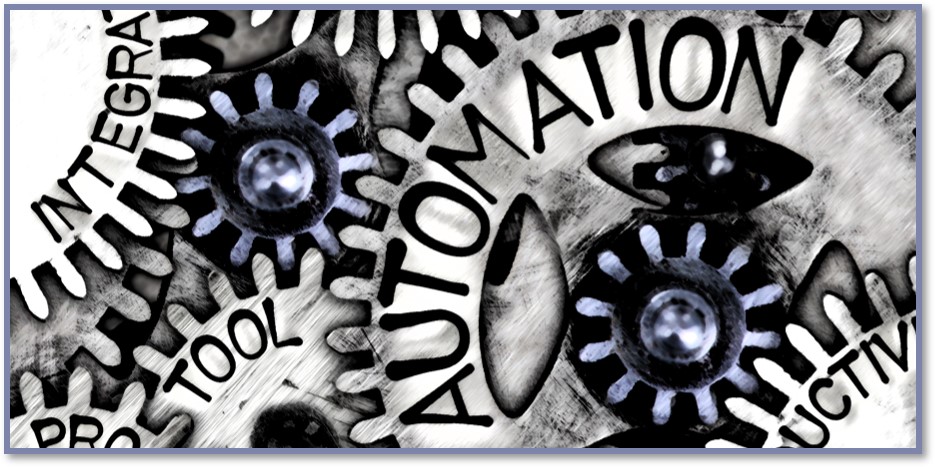 Automation is coming to California, just like traffic school online is coming to several other states. But there are some serious implications for the ways in which more things are going to be automated. One of the most important implications is that a lot of people are going to lose their jobs. If they can be replaced by a robot or an automated system, and it's cheaper to make that replacement, then it's generally not surprising that companies are making that choice. Cars are even becoming automated, both in how they're made and how they're driven. That affects vehicle makers, but it also affects those who drive for a living.
Automation is coming to California, just like traffic school online is coming to several other states. But there are some serious implications for the ways in which more things are going to be automated. One of the most important implications is that a lot of people are going to lose their jobs. If they can be replaced by a robot or an automated system, and it's cheaper to make that replacement, then it's generally not surprising that companies are making that choice. Cars are even becoming automated, both in how they're made and how they're driven. That affects vehicle makers, but it also affects those who drive for a living.
Right Now, Drivers Still Have Their Jobs
The idea of automation taking over driving jobs isn't a new one. There are currently automated cars being tested out by Google and other companies. While there have been accidents and problems, the technology continues to be worked on. In time, it's possible that driverless cars could become much more common. When that happens, there will be a lot more jobs lost. There will also be the risk of an accident between these cars and those that are still piloted by drivers. If the driver is at fault, they may need to take a traffic course for ticket dismissal. But what if the automated car is at fault in the accident? It's clear that the current laws will need to be adjusted as automation takes over more cars and trucks on the road in the future.How Much of the Automation is Really Expected?
There are all kinds of estimates about automation and driverless cars. When these cars are much more popular, and they can do more than just move down the road safely, drivers really could see their jobs drying up and disappearing. But for now, there isn't too much danger. There are also a lot of other types of jobs that could go away, including fast food workers, cashiers, accountants, and much more, due to the ability to automate a lot of the functions that those people currently perform. Self-checkout lines at grocery stores are one example of this. Some estimates of how many CA workers will lose their jobs to automation in the coming years are as high as 40 percent or more, while other estimates put the number at a much more modest level of just under 10 percent. No matter which of these numbers is correct, though, or whether the answer is somewhere in the middle, it's clear that at least some California workers are going to lose their jobs to automation. That's unfortunate for them and for the families that they take care of, and it can make communities less stable because fewer people in them will be able to support themselves.Those Who Drive Should Take Note of Automation
For anyone who drives on California roads, taking note of automation is very important. Whether there's the chance that automation will take their job as a driver, or whether automation could result in an accident with a driverless car, it's important that drivers know the laws, rules, and requirements in their state. That way, if they do end up getting a ticket, they can take an online traffic course for ticket dismissal. As more changes come through automation the laws regarding accidents with driverless cars will need to be adjusted. But those who are at fault in these accidents will still want to understand their options so they can reduce the chances of higher insurance rates, points on their license, and other types of problems such as fees and fines.Best SUV Lease Deals
I'm sorry, I need the text you would like me to rephrase in order to assist you. Could you please provide it? Has anyone else noticed there’s too many leasing deals for SUVs? If your method of choosing which SUV to lease was based on the best deal, you’re in trouble. There’s just too many good SUV leasing deals out there today. Leave it to Memorial Day weekend to kickstart leasing season. To help you make your leasing decision, we’ve compiled a list of the best SUV deals available. After reading this, you might just find a great new ride. At the very lease you will find great new deals. [framed_box]Buick Encore
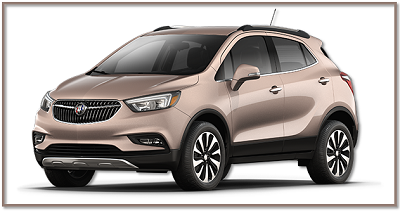 The Buick Encore comes from a line of luxury SUVs. The Encore has all the comfort of driving a luxury SUV at the monthly cost of driving a farm wagon. You can start your lease at the payment of $199 a month for 39-months with $3,329 due at signing. You can say this great leasing deal deserves a roaring encore. [/framed_box]
[framed_box]
The Buick Encore comes from a line of luxury SUVs. The Encore has all the comfort of driving a luxury SUV at the monthly cost of driving a farm wagon. You can start your lease at the payment of $199 a month for 39-months with $3,329 due at signing. You can say this great leasing deal deserves a roaring encore. [/framed_box]
[framed_box]
Chevrolet Trax
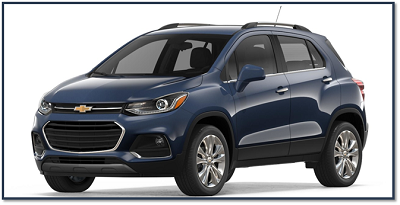 The Chevrolet Trax has all the benefits of driving a sturdy SUV while giving you justification to leave it in a compact parking spot. Leasing one today starts at $149 a month for 24-months with $3,969 due at signing. You won’t have to worry about getting lost in this SUV; it’ll keep you on trax.[/framed_box]
[framed_box]
The Chevrolet Trax has all the benefits of driving a sturdy SUV while giving you justification to leave it in a compact parking spot. Leasing one today starts at $149 a month for 24-months with $3,969 due at signing. You won’t have to worry about getting lost in this SUV; it’ll keep you on trax.[/framed_box]
[framed_box]
Toyota RAV4
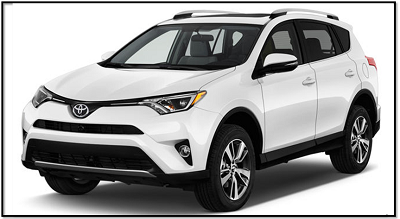 The Toyota RAV4 is a trustworthy SUV that provides peace of mind to its driver. You can lease yours starting at a price of $199 a month for 36 months with $2,000 due at signing. The only thing that will upset you is the $1 off from having a perfectly rounded monthly payment.[/framed_box]
[framed_box]
The Toyota RAV4 is a trustworthy SUV that provides peace of mind to its driver. You can lease yours starting at a price of $199 a month for 36 months with $2,000 due at signing. The only thing that will upset you is the $1 off from having a perfectly rounded monthly payment.[/framed_box]
[framed_box]
Hyundai Kona
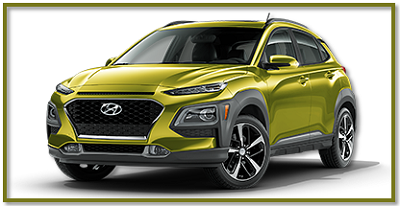 The Hyundai Kona is one of the most stylistic SUVs around. With a great leasing deal, you can finally earn everyone’s attention and respect. Leasing starts at $199 a month for 36-months with $2,399 due at signing. The only thing more respectable than leasing a Hyundai Kona is showing off what you learned in California traffic school. [/framed_box]
[framed_box]
The Hyundai Kona is one of the most stylistic SUVs around. With a great leasing deal, you can finally earn everyone’s attention and respect. Leasing starts at $199 a month for 36-months with $2,399 due at signing. The only thing more respectable than leasing a Hyundai Kona is showing off what you learned in California traffic school. [/framed_box]
[framed_box]
Honda HR-V
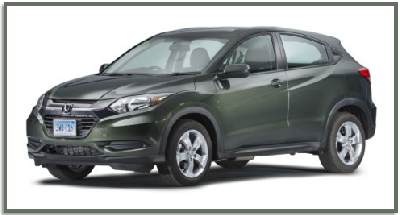 Honda’s are known for their excellent safety ratings. Just like their leasing deals! You can have the financial safety of a $189 a month payment for 36-months contract with a low $2,299 due at signing. Even when paying for your Honda, you’re secure. [/framed_box]
[framed_box]
Honda’s are known for their excellent safety ratings. Just like their leasing deals! You can have the financial safety of a $189 a month payment for 36-months contract with a low $2,299 due at signing. Even when paying for your Honda, you’re secure. [/framed_box]
[framed_box]
Ford Escape
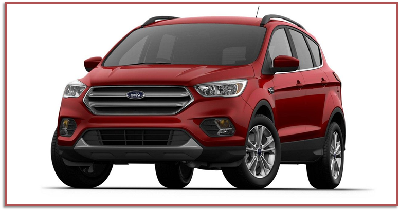 The Ford Escape is one of the most beloved SUVs on the market. You can lease yours at $239 a month for 36-months with $2,729 due at signing. Despite being on the pricier end of the leasing deals, this Ford SUV is too good to let it escape! [/framed_box]
[framed_box]
The Ford Escape is one of the most beloved SUVs on the market. You can lease yours at $239 a month for 36-months with $2,729 due at signing. Despite being on the pricier end of the leasing deals, this Ford SUV is too good to let it escape! [/framed_box]
[framed_box]
Subaru Forester
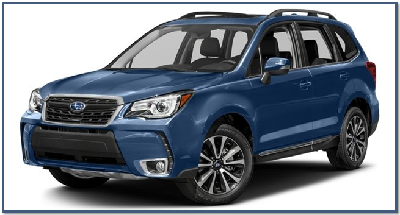 If you’re someone who doesn’t like paying money when they lease a new car, then consider the Subaru Forester’s great new leasing deal. The payments start at $259 a month for 36-months with $0 due at signing. Signing documents and making money payments go together like orange juice and toothpaste.[/framed_box]
[framed_box]
If you’re someone who doesn’t like paying money when they lease a new car, then consider the Subaru Forester’s great new leasing deal. The payments start at $259 a month for 36-months with $0 due at signing. Signing documents and making money payments go together like orange juice and toothpaste.[/framed_box]
[framed_box]
Chevrolet Equinox
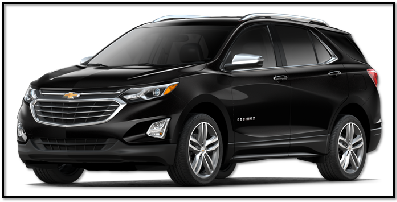 The Chevrolet Equinox is rated the most dependable compact SUV. Leasing contracts start at $200 a month for 24-months with $3,609 due at signing. The Equinox may be dependable, but not as dependable as those monthly payments.[/framed_box]
[framed_box]
The Chevrolet Equinox is rated the most dependable compact SUV. Leasing contracts start at $200 a month for 24-months with $3,609 due at signing. The Equinox may be dependable, but not as dependable as those monthly payments.[/framed_box]
[framed_box]
Ford Edge
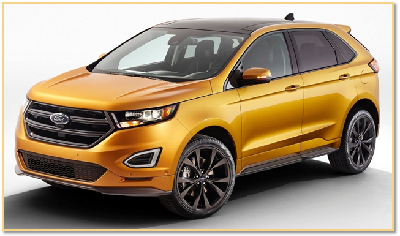 Time to hang up the leather jacket and archive the Blink-182 albums, because it’s a whole lot easier to be edgy. Leasing your Ford Edge is as affordable as ever with the new $289 a month for 36-months contract with $3,369 due at signing. Now you can have the same edge without the need to write your deep, dark poems.
[/framed_box]
Time to hang up the leather jacket and archive the Blink-182 albums, because it’s a whole lot easier to be edgy. Leasing your Ford Edge is as affordable as ever with the new $289 a month for 36-months contract with $3,369 due at signing. Now you can have the same edge without the need to write your deep, dark poems.
[/framed_box]
CA Cruise, Hotel Package, or Other?
I'm sorry, but I need the text you want me to rephrase in order to proceed. Please provide the text and I'll be happy to assist you. When you’re visiting the great Golden State, it’s hard to decide on the best way to see everything California has to offer. You don’t want to miss out on the tranquil beaches, captivating city life, and breathtaking mountains and redwood forests. To help you decide the best vacation styles, we’re weighing the opportunities California has for you. [framed_box]Wine Tasting Cruise
Sip on a nice glass of pinot grigio while you sail the red wine sea. This excursion will introduce you to the wines grown across the state. Therefore, if you’re seeking an adventure through California’s boozier side, this is the cruise for you. We dare you to wine about this voyage. [/framed_box] [framed_box]Celebrity Cruise
If you want to be treated like a celebrity or, perhaps, see a celebrity, then all aboard on one of California’s celebrity cruise line. You’ll catch high grade entertainment, gourmet restaurants, and top tier spas as you sail the Pacific Ocean. California is known for its entertainment and this cruise won’t let you forget it. You get the benefits of being a celeb without the paparazzi. [/framed_box] [framed_box]Port-to-Port Pacific Coast Cruise
There’s also the option of seeing the serene beauty of California’s landscapes off the bow of a quadruple decker ship. Sailing from port-to-port will give you the opportunity to explore the more notable coastal cities, such as San Francisco, Los Angeles, and San Diego. You won’t even run into pirates. [/framed_box] [framed_box]Auberge du Soleil
The Auberge du Soleil is a hotel resort that gives you all the joy of an adventurous, fun filled stay while lodged away in the peaceful town of Rutherford, California. You can get an aerial view of California with nearby hot air balloon rides. Instead of Auberge du Soleil, the owners should call it Auberge du Sold! [/framed_box] [framed_box]The Ritz-Carlton, Half Moon Bay
Known for their top tier hotel stays, The Ritz-Carlton doesn’t disappoint. Half Moon Bay is a coastal getaway located between San Francisco and San Jose. A few of the amenities include horseback riding, Segway tours, and spa therapist. [/framed_box] [framed_box]Rancho Bernardo Inn
The Rancho Bernardo Inn is so regal, they offer their very own fountain tour. The Inn also has spas, yoga and meditation centers, golf courses, and dining areas that feature California’s finest cuisines. It’s the most comfortable way to experience the nature of California.[/framed_box] [framed_box]Camping
If you’re looking to experience the nature of California a little outside your comfort zone, then pitch a tent and go camping. There’s a plethora of camping grounds across the state where you can hike, camp, and gaze underneath the stars. Camping has all the benefits of a hotel, without the luxurious amenities. [/framed_box] [framed_box]Airbnb
Explore the far reaches of the state while staying in someone else’s home. Airbnb has properties listed in just about every area of California. There’s no space uncharted if you don’t mind renting out another person’s bedroom. [/framed_box] [framed_box]Sleeping in Your Car
One activity we don’t recommend is sleeping in your car. Just because you passed your California traffic school test, doesn’t mean you get to sleep in your car. California can get strange, and even stranger at night. Sleeping in your car can be dangerous and even illegal. However, that’s not stopping you from exploring the state through the confines of your vehicle. [/framed_box] [framed_box]Crashing on a Couch
Take part in a long-standing tradition of California by sleeping on a friend’s couch. If you have a friend who lives in the state, pitch them the idea of staying in their living room or spare bedroom. It’s a cost-effective way to explore the rural or urban cultures of California. Some people will surf waves, but you can surf couches.[/framed_box]CA Driving and Traffic School Online Best Kept Secrets
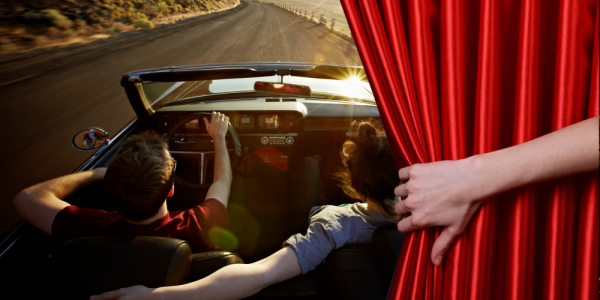 In a state with over 14 million registered cars, it’s easy to assume that driving is a skill perfected by California traffic school online graduates. The average CA driver will experience their fair share of roadside tribulations in their lifetime. This endows them with a wealth of knowledge to withstand any difficult, car-related disaster. That’s why we’re pulling back the curtain and revealing the best kept secrets in California driving.
[framed_box]
In a state with over 14 million registered cars, it’s easy to assume that driving is a skill perfected by California traffic school online graduates. The average CA driver will experience their fair share of roadside tribulations in their lifetime. This endows them with a wealth of knowledge to withstand any difficult, car-related disaster. That’s why we’re pulling back the curtain and revealing the best kept secrets in California driving.
[framed_box]
Travel the speed limit
There’s no better way to avoid a speeding ticket than by driving the speed limit. Doing so will help you avoid road collisions. It may seem obvious, but, judging the number of people who do it, traveling the speed limit is apparently one of the best-kept secrets in California.[/framed_box] [framed_box]Watch your blind spot
Watching your blind spot helps you avoid a collision when switching lanes. Drivers sneak-up on you. The best way to avoid this from happening is to check your blind spots before merging lanes. You don’t want people to think you’re mentally blind. [/framed_box] [framed_box]Dock your phone
In the state of California, using your phone is illegal while driving. However, don’t let that stop you from failing at navigating with your phone’s GPS like the rest of us. To use a phone while driving, use the Bluetooth feature, while your phone is docked to the dashboard or windshield of your car. You must keep your hands off your phone, despite that desire to chuck it out a window. [/framed_box] [framed_box]Pack water during the summer
In the summer, the desert side of California starts to show. Cities and rural areas experience high heat and harsh sunlight. If you don’t want to barricade inside your house, taking traffic school online all summer, there’s an easy solution. Packing water will keep you cool and refreshed in case your car breaks down or overheats. It’s also helpful when you’re a little parched. [/framed_box] [framed_box]Read parking signs carefully
California is notorious for its incomprehensibly convoluted parking signs. Certain areas of the state require extraneous circumstances for you to park. Paying attention to signs is a beneficial way to avoid expensive citations. To park in California, you need a PhD. in English. [/framed_box] [framed_box]Maintain your suspension and brakes
California’s rocky environment and salty ocean fronts can leave tear on the infrastructure of your car. This means bumpy roads, constant construction, and deep potholes. Maintain your brakes and suspension otherwise you’ll have a suspenseful drive. [/framed_box] [framed_box]Pass drivers in the left lane
3-lanes of traffic doesn’t mean you get to pass people in the right lane. Road etiquette has no meaning when nobody follows it. The left lane is used for passing, the middle is for cruising, and the right is for exiting.[/framed_box] [framed_box]Keep traffic momentum
Momentum is important when you’re in a heavy traffic area. Keeping a steady flow helps ease everyone out of congested highways and roads. The secret to keeping the momentum is giving other cars plenty of space as you cruise through the traffic - just like every healthy relationship. [/framed_box] [framed_box]Prepare for the rainy days
A light drizzle causes destruction and mayhem. At least that’s how some overdramatic drivers react to rain. The best way to prepare for rainy days is by keeping your headlights on, driving the speed limit, and giving others room while driving. [/framed_box] [framed_box]Keep your cool
Getting heated behind the wheel is easy. Drivers are, at times, reckless to a point you would think it’s intentional. With so much traffic, there’s no space for irrational driving. Save the heat for those summer days and stay cool while driving. [/framed_box]- Drive safer by avoiding blind spots and truck no-zones! Learn more at Avoid Blind Spots and Truck No-Zones.
Can You Register a Car Online?
 There are many reasons why states require people to register their cars. Part of the reason is for taxation. But other reasons include keeping track of who owns what car, figuring out the number of cars on the roadways, and ensuring the vehicles on the roads are safe. If you are looking to register a new vehicle or pay your current registration for an existing vehicle, you may wonder if this is something you can do online. The answer to this question varies based on the state you are in. Here are a couple popular states and the information you need to know about how to register a car online in these states.
[framed_box]New York
In New York, some registrations are eligible to be renewed online. You may be eligible to complete your renewal process online if your registration has not been expired for a year or longer, your registration is not suspended, you have insurance and you have had your vehicle inspected in the last year. If you are eligible to renew online, your registration paperwork will indicate that you can go online and make the payment. If you are not eligible, you will have to go to the New York Department of Motor Vehicles to renew your registration.[/framed_box]
[framed_box]California
In California, online car registration can only be used for cars that are currently registered in California and have been within the past year. If you are looking to register a car from out of state or looking to register a car that has not been registered in over a year, you will need to go to the DMV. Additionally, online registration may not be completed if the information you need to complete the process has not been electronically submitted. This includes a smog check and your insurance papers. If you pay online without proof of either of these, you will be asked to submit them by mail or in person before your registration process can be completed. Also, be sure you have completed a driving course at an accredited driving school. If you are wondering how to register a car in California easily take a look at some more of our content.[/framed_box]
[framed_box]Arizona
Unless you are looking to register a car from out of state, the answer to the question " can I register my car online in Arizona" is yes. Your renewal slip will tell you whether you need an emissions test or not. If you do, you must obtain this test and have it electronically sent to the DMV before you can register your car. Once that information has been received, you can register your car online. Be aware that if you have outstanding tickets, you may be required to pay those before you can register your vehicle. This can also be done online, making the process easy.[/framed_box]
[framed_box]Texas
Texas, of course we did not forget you. If you are wondering how to register a car in Texas there are a few ways including online, by mail or in person to a county substation. One of the unique things about Texas is that you do not even need to wait for a renewal form to register your vehicle. You can register it simply using the license plate number or VIN number when the time comes.[/framed_box]
[framed_box]Florida
Florida will not allow you to register out of state vehicles or vehicles that you have just purchased online. However, if you are looking to register a vehicle that has been previously registered in your name, you can re-register it online. You can re-register your vehicle up to three months in the state of Florida as long as there is a current proof of insurance certificate meeting the state minimum on file for your vehicle.
Most states are now allowing customers the ability to pay their registration fees online, rather than having to mail them in or pay them at a DMV office. If you live in New York, Florida, Texas, California, or Arizona, you live in one of the states that allows this, making it easy to pay your vehicle registration when the time comes. Those states also make it easy for you to take traffic school online to dismiss a ticket. Great news for the super and somewhat-super computer savvy.
[/framed_box]
There are many reasons why states require people to register their cars. Part of the reason is for taxation. But other reasons include keeping track of who owns what car, figuring out the number of cars on the roadways, and ensuring the vehicles on the roads are safe. If you are looking to register a new vehicle or pay your current registration for an existing vehicle, you may wonder if this is something you can do online. The answer to this question varies based on the state you are in. Here are a couple popular states and the information you need to know about how to register a car online in these states.
[framed_box]New York
In New York, some registrations are eligible to be renewed online. You may be eligible to complete your renewal process online if your registration has not been expired for a year or longer, your registration is not suspended, you have insurance and you have had your vehicle inspected in the last year. If you are eligible to renew online, your registration paperwork will indicate that you can go online and make the payment. If you are not eligible, you will have to go to the New York Department of Motor Vehicles to renew your registration.[/framed_box]
[framed_box]California
In California, online car registration can only be used for cars that are currently registered in California and have been within the past year. If you are looking to register a car from out of state or looking to register a car that has not been registered in over a year, you will need to go to the DMV. Additionally, online registration may not be completed if the information you need to complete the process has not been electronically submitted. This includes a smog check and your insurance papers. If you pay online without proof of either of these, you will be asked to submit them by mail or in person before your registration process can be completed. Also, be sure you have completed a driving course at an accredited driving school. If you are wondering how to register a car in California easily take a look at some more of our content.[/framed_box]
[framed_box]Arizona
Unless you are looking to register a car from out of state, the answer to the question " can I register my car online in Arizona" is yes. Your renewal slip will tell you whether you need an emissions test or not. If you do, you must obtain this test and have it electronically sent to the DMV before you can register your car. Once that information has been received, you can register your car online. Be aware that if you have outstanding tickets, you may be required to pay those before you can register your vehicle. This can also be done online, making the process easy.[/framed_box]
[framed_box]Texas
Texas, of course we did not forget you. If you are wondering how to register a car in Texas there are a few ways including online, by mail or in person to a county substation. One of the unique things about Texas is that you do not even need to wait for a renewal form to register your vehicle. You can register it simply using the license plate number or VIN number when the time comes.[/framed_box]
[framed_box]Florida
Florida will not allow you to register out of state vehicles or vehicles that you have just purchased online. However, if you are looking to register a vehicle that has been previously registered in your name, you can re-register it online. You can re-register your vehicle up to three months in the state of Florida as long as there is a current proof of insurance certificate meeting the state minimum on file for your vehicle.
Most states are now allowing customers the ability to pay their registration fees online, rather than having to mail them in or pay them at a DMV office. If you live in New York, Florida, Texas, California, or Arizona, you live in one of the states that allows this, making it easy to pay your vehicle registration when the time comes. Those states also make it easy for you to take traffic school online to dismiss a ticket. Great news for the super and somewhat-super computer savvy.
[/framed_box]
-
For details about AZ Emissions Testing, click here: AZ Emissions Testing
- For information About How to Register a Car in California click: How to Register a Car in California
- For More Information On Drivers License Status CA and License Renewals, Click: Check Drivers License Status CA and License Renewals
- Explore the smooth process of TN registration for new and current residents!
- Obtain your California driver's license today: California Driver’s License .
Riding With Uber From Your Uber Driver’s Perspective
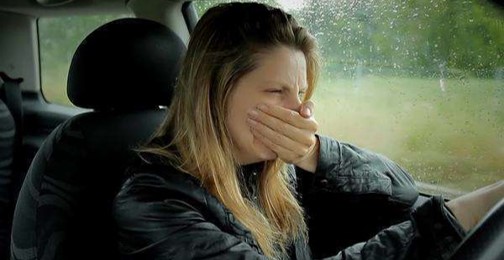 Is your car in the shop, but you need to get to work? Do you want to party into the wee hours of the morning then get home safely? Is your license suspended until you complete your online traffic school? Is owning a car just unfeasible for you right now? If the answer to any of those is yes, you’re probably already familiar with ride-sharing companies, the biggest of which is Uber.
[framed_box]
Is your car in the shop, but you need to get to work? Do you want to party into the wee hours of the morning then get home safely? Is your license suspended until you complete your online traffic school? Is owning a car just unfeasible for you right now? If the answer to any of those is yes, you’re probably already familiar with ride-sharing companies, the biggest of which is Uber.
[framed_box]
Easy to Apply
For those new to this idea, or those who have just been devoted to taxis their whole lives, Uber is the company that is putting taxis out of business. Their prices are usually cheaper because the drivers are using their own cars, and in most states, just about anyone can become an Uber driver with minimal effort. In fact, when I signed up almost five years ago, I simply filled out a very quick and simple form online, with just enough details for Uber to run a background check. One week later, I was on the road making money! I only had to go through a half an hour of online training without ever talking to another human being. If you’re not comforted by how easy it is to become an Uber driver, you’re not alone. However, let me assure you, the sign-up process is the last easy thing about being an Uber driver. The hours are long, and the pay is far from guaranteed. In fact, once you factor in depreciation and all the extra gas, maintenance, and car washes, the driver is really only making pocket change. Also, because what the driver makes is a percentage of the total cost of the ride, every time Uber drops the prices for the customers, it’s a pay cut for the drivers. In other words, if your driver is grouchy, it’s not without cause. However, there are a few things riders can do to ensure a smooth ride and a happier driver. Remember, drivers must rate their riders, and your rating can affect how quickly you get picked up next time you call, so try to remain on their good side! [/framed_box] [framed_box]Be on Time
Time is money, and your driver is not getting paid until you’re in the car. And here’s a fun fact not many people know: if you take a very short ride with Uber, your driver gets about $2.40 after Uber takes their cut. However, if you don’t show up after the driver has waited the required five minutes, your driver cancels the ride and collects the cancellation fee, which nets them a whole $4. This means that if you made your driver wait four minutes and then took a short ride with the minimum fare, your driver would have made more money had you taken another minute and they’d cancelled. If your driver is already having a bad day, they’re not going to give you a good rating at that point. [/framed_box] [framed_box]The AUX Cord
Maybe you’re taking a longer ride and want to enjoy some music. That’s totally understandable. I highly recommend headphones. If you want it to play through the car’s speakers, you’re going to have to ask your driver to use their AUX (or auxiliary) cord. This is a question that fills drivers with a sense of overwhelming dread. At the end of the day, not everyone likes the same music. If you demand the AUX cord and then put on music your driver doesn’t like, I can guarantee you’re not getting five stars. Even though I consider my music taste to be eclectic, after three years of listening to other people’s music, I was handing out one-star ratings like candy. Eventually I tried to negotiate with the riders, politely saying something along the lines of, “Yes, I have an AUX cord, but please, for the sake of my head not exploding, I beg you to put on anything but [whatever music genre I was avoiding that day].” The riders would sometimes comply (five stars!) and sometimes put on that genre seemingly just for spite (one star!). After enough bad experiences, I’d just lie and say the cord was broken. Luckily, there’s a simple fix for this one: talk to your driver. Most of them would probably also like to have music on. There are countless genres of music out there. With a simple conversation, you and your driver are bound to find at least one genre of music that you enjoy and that doesn’t make your driver want to jump out of the moving car. [/framed_box] [framed_box]Don’t Throw Up
This one should be a no-brainer, but somehow it still happens enough that it needs to be said. Not only will you be charged a cleaning fee that can range from $50 to $200, but your driver will lose all wages for the rest of the night because their car will be out of commission until it’s cleaned. Even the most compassionate driver is still going to give a one-star rating to someone who pukes in their car. In fact, even someone who looks like they might puke is likely to earn a low rating (I’d usually give two or three stars) because of the tension the driver feels as they pray the rider can make it just a couple more blocks and out of their car before the inevitable explosion. [/framed_box] [framed_box]Tip
Apart from hurling, there’s not much bad behavior a cash tip won’t make up for. Just recently Uber has allowed tipping through the app, and it’s highly likely the driver won’t see that you tipped them until long after they’ve rated your ride. Even if you end your ride by saying, “I’ll tip you, I promise,” your Uber driver is tired and has been lied to many times. If you like to listen to a specific artist that the driver might not like, or if you’re going to be riding with friends and you don’t want one of them to badly affect your rating, carry cash. A couple bucks, maybe $5 on a long ride, will absolutely guarantee your driver remains content and will not post a story about you on one of our secret rideshare driver forums. [/framed_box] Follow these guidelines, and your driver will be happier, and your ride will be less of a chore for both of you. Check back next week to learn some things Uber will never tell you about the rating system!How to Decrease Your Auto Insurance Costs
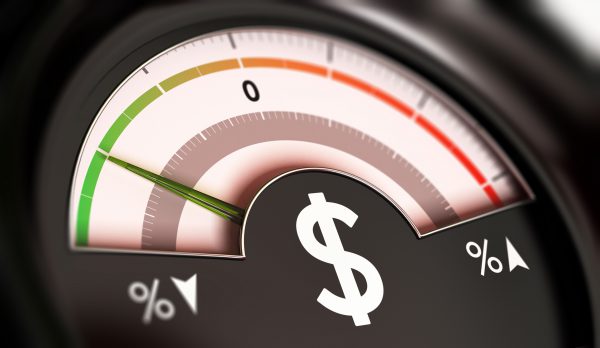 Owning an automobile can be expensive. There's the cost of the car itself, gas, registration, maintenance and repairs, and, of course, auto insurance premiums. Noting that, it's only natural for vehicle owners to try to save money on their total vehicle ownership if possible, and one of the biggest consistent costs is auto insurance.
Though auto insurance rates vary based on state, driving experience and the owner’s driving record, generally consumers should plan to set aside anywhere from $800 to $1,000 per year to insure their car. The good news is that there are several ways to decrease auto insurance costs; from taking a defensive driving course online to bundling your auto package with other coverages. Here are some tips to help shave dollars off your insurance premiums:
[framed_box]
Owning an automobile can be expensive. There's the cost of the car itself, gas, registration, maintenance and repairs, and, of course, auto insurance premiums. Noting that, it's only natural for vehicle owners to try to save money on their total vehicle ownership if possible, and one of the biggest consistent costs is auto insurance.
Though auto insurance rates vary based on state, driving experience and the owner’s driving record, generally consumers should plan to set aside anywhere from $800 to $1,000 per year to insure their car. The good news is that there are several ways to decrease auto insurance costs; from taking a defensive driving course online to bundling your auto package with other coverages. Here are some tips to help shave dollars off your insurance premiums:
[framed_box]
Take a Defensive Driving Course
Doing this is beneficial, even if you don't want to shave points off your license. That's because it shows insurance companies that you're being proactive about your driving safety, something that many look at favorably and award discounts for. Of course, if you have points on your license, taking a defensive driving course online can help reduce them in some states. In many cases, passing a certified course can take points off your license, thereby reducing rates or preventing rates from increasing further. Here are a few courses that guarantee an auto discount for you: California Mature Driver Course Your CA Insurer is required to provide an auto discount to those age 50-55 years or older (depending on insurance company), who present proof of completion of the mature driver improvement course approved by the California DMV:California Mature Driver CourseFlorida Mature Driver Course Your FL Insurer is required to provide an auto discount to those age 50-55 years or older (depending on insurance company), who present proof of completion of the mature driver improvement course approved by the Florida DHSMV:Florida Mature Driver Course
New York Defensive Driver Course Your NY Insurer is required to provide an auto discount to those who present proof of completion of a defensive driving course approved by the New York DMV:New York Defensive Driving Course
Delaware Basic Driving Course Your DE Insurer is required to provide an auto discount to those who present proof of completion of a 6-hour basic driving course or 3-hour refresher course approved by the Delaware DMV:Delaware Basic Driving Course Auto Insurance Discount Course Most auto insurance companies in other states provide an auto discount to those who present proof of completion of a defensive driving course. Check with yours first to confirm! www.MyImprov.com [/framed_box] [framed_box]
Shop Around
If you think you're paying too much for auto insurance, it never hurts to shop around a little bit. Go to other insurance companies, tell them what you're paying now and that you're looking for a company that can beat that price. Insurance companies are running a business, and part of business is gaining new clients. Companies are likely going to be more than willing to try to earn your business, and if you have more entities that you can insure with them, they'll likely sweeten the quote that they give you even more. [/framed_box] [framed_box]Own Your Car
Leasing has its benefits, but when it comes to saving money on auto insurance, that's not one of them. That's largely because when you lease, you're required to keep certain amounts of coverages and there's no wiggle room around it. If you own your car, you can likely save money by reducing coverage to legal minimums. Sure, you may have to pay some money out of pocket if you are ever in an accident and the limits don't fully cover the damage, but for most people, this is a risk that they're willing to take to save money on insurance premiums. [/framed_box] [framed_box]Bundle Packages
Have a home? A boat? Other vehicles? When you insure multiple entities with one insurance company, you're likely to receive a discount. Think of it as an appreciation discount, as for insuring multiple entities with the company you get rewarded for your business and your trust with the respective insurance company. The more you can bundle, the more you're likely to save. [/framed_box] [framed_box]Ask Your Insurance Agent
Here's one that not many drivers think to pursue: Simply just call up your current insurance agent and see if there's anything that you can do to receive some sort of reduced or discounted premium. Often, something as simple as just parking your vehicle in the garage - where it's more guarded from Mother Nature and potential theft - can yield a savings. Adding certain modern-day safety features to your vehicle can help as well. Driving less miles per year may be able to help. Your agent can also tell you if taking the defensive driving course online can net a discounted rate. [/framed_box]Will California Bullet Train Travel Be Worthwhile?
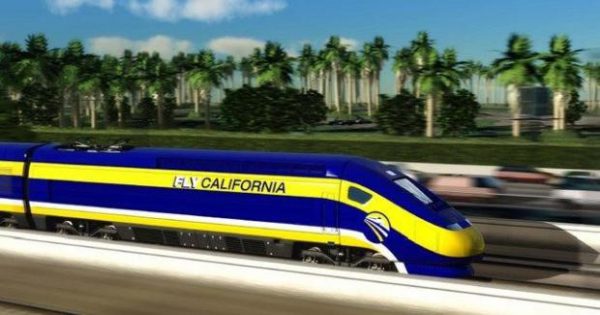 They were first seen in farmers markets. Next, they were asking for signatures outside big-box stores. Finally, the young idealists successfully rallied the people behind the idea of the California High-Speed Rail, also known as the California Bullet Train, a massive project that would allow passengers to ride between Los Angeles Union Station and San Francisco's Transbay Transit Center in a mere 2 hours and 40 minutes. They also plan to build extra tracks going down through Anaheim, all the way to San Diego in the south, and an alternate track running to Sacramento in the north. For many, this sounds like a dream come true. However, it might be time to admit that the project may only work in theory.
They were first seen in farmers markets. Next, they were asking for signatures outside big-box stores. Finally, the young idealists successfully rallied the people behind the idea of the California High-Speed Rail, also known as the California Bullet Train, a massive project that would allow passengers to ride between Los Angeles Union Station and San Francisco's Transbay Transit Center in a mere 2 hours and 40 minutes. They also plan to build extra tracks going down through Anaheim, all the way to San Diego in the south, and an alternate track running to Sacramento in the north. For many, this sounds like a dream come true. However, it might be time to admit that the project may only work in theory.
How Off-Track Has This Gone?
Earlier this year, it was announced that the cost of building 119 miles of track in the Central Valley has already surged beyond the original estimate of $6 billion. It is now $10.6 billion, and the project has barely begun, despite construction being approved by California's Governor Jerry Brown in 2012. These cost estimates are just for the Central Valley. The current conservative estimates of the total cost of the project are now at $98 billion, more than double what the voters approved in Proposition 1A back in 2008. Possibly worst of all, the project won't be completed until 2029, when those young idealists will be in or near their forties, and Jerry Brown, the governor who made this all possible, will be at least retired and might even, by then, be riding the great train tracks in the sky. With the astounding speed new technology develops these days, the California High-Speed Rail might even be obsolete before they're done building it.How Will the Train Be Worth This Hassle?
Let's take a step back from all the insane statistics of failure. What do we want from a California bullet train, in the beautiful, hypothetical future where the undertaking is successful? Is there any one thing, aside from the massive convenience of the quick travel time, that will make riders choose a train over an even shorter flight? Many airlines have been offering cheap in-state flights for years, so how can the California High-Speed Rail compete? One option is to give the passengers room to breathe. While those who stand to profit from the train may want to pack riders in like sardines, much like the coach section on most commercial flights, the ability to stretch their legs out could certainly sway even devoted members of Frequent Flyer's programs. However, there may be a rush to recoup all the money spent on the project. Those at the top might think the easiest way to do this would be to cram as many seats as possible onto the train, then charge as much as they think people will pay for them. If they do this, the whole endeavor could fail, wasting billions of taxpayer dollars and two decades of planning and hard work. Very few people will choose a longer travel time if both cost and comfort are comparable to the less time-consuming option. As an alternative, to both boost income and attract riders, the California High-Speed Rail needs to have Wi-Fi, or whatever new internet connectivity may be available in 2029. They can charge a usage fee, just like most airlines do. This way, people can while away the commute on their phones, playing their games, reading their emails, or even completing their traffic school online. Many people hate flying, for a variety of reasons. If they are given a traveling option that is almost as fast as flying but more comfortable and just as secure, they will be happy to pay an extra five or ten bucks for the Wi-Fi. This will allow the project to remain financially feasible, and all the critics will have to admit the trials and tribulations were worth it in the end. Ultimately, California will remain a leader in new and innovative technology.What’s Better: Ride Cabin or Driving?
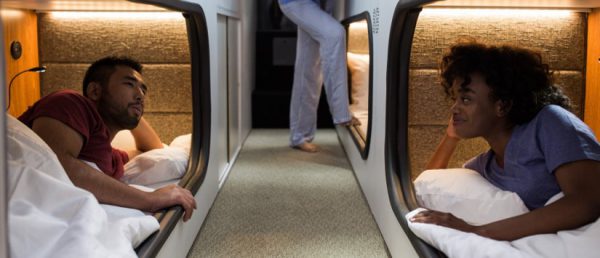 You may be familiar with the revolutionary mode of transportation that recently sprung up in California. Ride cabin is a unique travel experience where passengers rent out private pods known as “cabins” while they ride between Los Angeles and San Francisco in a giant mega bus. What sounds like a perfect setting for a Black Mirror episode is a convenient way to travel between metropolitan areas.
But, is it better than driving?
As always, we ask the hard-hitting questions that plague everyone’s mind. Especially when it comes to futuristic modes of transportation. We’re weighing the pros and the cons of whether it’s better to drive between Los Angeles and San Francisco or to sleep travel in a Cabin.
You may be familiar with the revolutionary mode of transportation that recently sprung up in California. Ride cabin is a unique travel experience where passengers rent out private pods known as “cabins” while they ride between Los Angeles and San Francisco in a giant mega bus. What sounds like a perfect setting for a Black Mirror episode is a convenient way to travel between metropolitan areas.
But, is it better than driving?
As always, we ask the hard-hitting questions that plague everyone’s mind. Especially when it comes to futuristic modes of transportation. We’re weighing the pros and the cons of whether it’s better to drive between Los Angeles and San Francisco or to sleep travel in a Cabin.
Driving Between Los Angeles and San Francisco
[framed_box]Pros:
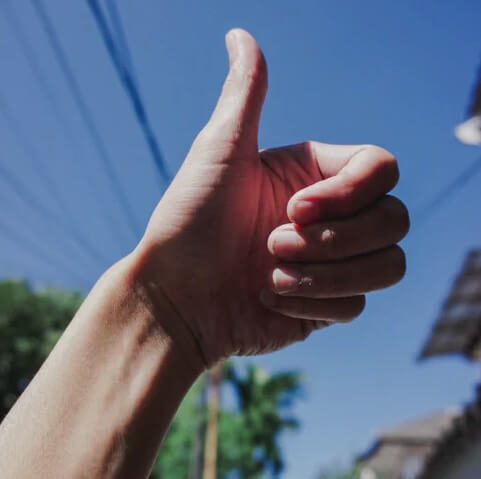 When you’re driving, you can take your time. You can cruise and enjoy the environmental beauty by taking the PCH or take I-5. Driving your own car allows you take as much freedom as you want between your destinations. You can even take a pit stop to make conversation with the crazy mountain cannibals.
You also won’t need to worry about luggage room. At least, you’ll have more room to fit your clothes, necessities, kitchen sink, or other important travel goods. You will even have the option to pick up a hitchhiker along the way.
Finally, you’ll be able to rock out to your own playlist. It’s nearly a 7-hour trip between the cities, so you have plenty of time to practice your singing, air drums, or choreographic seat dancing during your exhausting drive.
[/framed_box]
[framed_box]
When you’re driving, you can take your time. You can cruise and enjoy the environmental beauty by taking the PCH or take I-5. Driving your own car allows you take as much freedom as you want between your destinations. You can even take a pit stop to make conversation with the crazy mountain cannibals.
You also won’t need to worry about luggage room. At least, you’ll have more room to fit your clothes, necessities, kitchen sink, or other important travel goods. You will even have the option to pick up a hitchhiker along the way.
Finally, you’ll be able to rock out to your own playlist. It’s nearly a 7-hour trip between the cities, so you have plenty of time to practice your singing, air drums, or choreographic seat dancing during your exhausting drive.
[/framed_box]
[framed_box]
Cons:
 It’s a 7-hour trip. Did you read that correctly? 7-hours. Do you want to drive for 7-hours? That’s only one way! You’ll have to make that drive again when you’re returning.
You’re driving roughly 800 miles round trip. That’s road trip worthy preparation before you even start driving. Not to mention the wear and tear your car will accumulate during the 14-hour drive. There’s also the chance for bumping into reckless drivers, natural disasters, and other incidents that could occur while driving.
You’ll also have to fork up a bunch of money for gas, food, and other necessities along the way. If you get ticketed for violating a traffic law, you’ll be looking for “traffic schools near me” quicker than a Cabin bus en route to San Francisco, to dismiss the ticket and avoid points going on your record.
[/framed_box]
It’s a 7-hour trip. Did you read that correctly? 7-hours. Do you want to drive for 7-hours? That’s only one way! You’ll have to make that drive again when you’re returning.
You’re driving roughly 800 miles round trip. That’s road trip worthy preparation before you even start driving. Not to mention the wear and tear your car will accumulate during the 14-hour drive. There’s also the chance for bumping into reckless drivers, natural disasters, and other incidents that could occur while driving.
You’ll also have to fork up a bunch of money for gas, food, and other necessities along the way. If you get ticketed for violating a traffic law, you’ll be looking for “traffic schools near me” quicker than a Cabin bus en route to San Francisco, to dismiss the ticket and avoid points going on your record.
[/framed_box]
Taking a Cabin Btwn. Los Angeles and San Francisco
[framed_box]Pros:
 7-hours is the perfect amount of sleep you need every night. Coincidentally, it’s also the amount of time it takes a Cabin bus to travel between Los Angeles and San Francisco. While everyone else is driving through the night, you can have a full night's rest on the bus in your private sleeping cabin.
With the large amount of accommodations Cabin offers, you’ll be able to read, work, stream shows or movies, and just about anything else instead of driving. You can even bust out the air drums while listening to your favorite song.
Cabin is moving a hotel. Therefore, you’ll get the hospitality benefits of staying in a hotel while also getting the transportation benefits of a bus. You’ll have access to restrooms, you’ll get evening and morning refreshments, Wi-Fi access, USB plug ins, lounge areas, and luxury bedding.
[/framed_box]
[framed_box]
7-hours is the perfect amount of sleep you need every night. Coincidentally, it’s also the amount of time it takes a Cabin bus to travel between Los Angeles and San Francisco. While everyone else is driving through the night, you can have a full night's rest on the bus in your private sleeping cabin.
With the large amount of accommodations Cabin offers, you’ll be able to read, work, stream shows or movies, and just about anything else instead of driving. You can even bust out the air drums while listening to your favorite song.
Cabin is moving a hotel. Therefore, you’ll get the hospitality benefits of staying in a hotel while also getting the transportation benefits of a bus. You’ll have access to restrooms, you’ll get evening and morning refreshments, Wi-Fi access, USB plug ins, lounge areas, and luxury bedding.
[/framed_box]
[framed_box]
Cons:
 The only major con we can think of is interacting with people. But, the Cabin staff are exceptionally patient and kind. Paying money is always a con, but it’s nowhere near the price you’ll be paying for an 800-mile journey. One major con is not seeing all your crazy mountain friends, who only come out at night to hunt their human prey.
[/framed_box]
When taking a trip between cities, choose the means of transportation that is the best investment for your money and health. If you do end up driving, just remember that enrolling in a traffic school can prevent your annual insurance rates from increasing when, or if, you get a traffic violation. Also, don’t forget to bring raw meat for the crazy mountain cannibals!
The only major con we can think of is interacting with people. But, the Cabin staff are exceptionally patient and kind. Paying money is always a con, but it’s nowhere near the price you’ll be paying for an 800-mile journey. One major con is not seeing all your crazy mountain friends, who only come out at night to hunt their human prey.
[/framed_box]
When taking a trip between cities, choose the means of transportation that is the best investment for your money and health. If you do end up driving, just remember that enrolling in a traffic school can prevent your annual insurance rates from increasing when, or if, you get a traffic violation. Also, don’t forget to bring raw meat for the crazy mountain cannibals!
What is in the State of California Visitor’s Guide
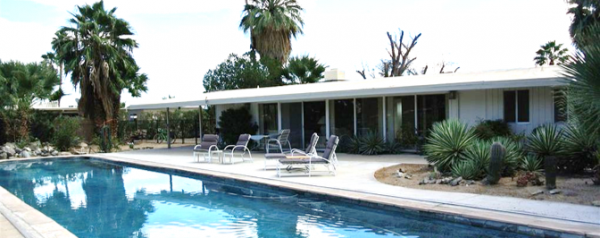 What better way is there to celebrate finishing your online traffic school than taking a trip to the West Coast? California is one of the biggest states in the entire country and the California Visitor's Guide covers a lot of ground. The state stretches across an area of 163,696 square miles and has limitless opportunities for adventures. Yet, I still never seem to have any plans on Friday nights.
You won’t ever have a problem finding something to do in California. The sheer amount of attractions, eateries, parks, and tourist destinations will keep you occupied during your entire stay. With that said, we’ve compiled a list of California musts during your vacation.
[framed_box]
What better way is there to celebrate finishing your online traffic school than taking a trip to the West Coast? California is one of the biggest states in the entire country and the California Visitor's Guide covers a lot of ground. The state stretches across an area of 163,696 square miles and has limitless opportunities for adventures. Yet, I still never seem to have any plans on Friday nights.
You won’t ever have a problem finding something to do in California. The sheer amount of attractions, eateries, parks, and tourist destinations will keep you occupied during your entire stay. With that said, we’ve compiled a list of California musts during your vacation.
[framed_box]
Redwood National Park
They’re really big trees! Who doesn’t love really big trees? If you want to get lost in the outdoors, this is really good way to do it. The Redwood National Park is home to the largest trees in the world. If you can’t get lost here, you should consider a career in navigation. [/framed_box] [framed_box]Golden Gate Bridge
You can wonder at this modern World Wonder. The Golden Gate Bridge connects San Francisco with the rest of the country by a mile-long suspension bridge. It’s also a national icon. [/framed_box] [framed_box]Disneyland
Located in Anaheim, California, this theme park is a must if you’re a Walt Disney fan. Disneyland is where you can finally embrace your inner princess by putting a pair of mouse ears on your head. [/framed_box] [framed_box]Death Valley
If you’re ready to leave this cruel, cruel world, then consider stopping by Death Valley. The name speaks for itself. Death Valley is a desert in Eastern California. Fun fact: It’s one the hottest places in the world with temperatures hitting 134 °F. [/framed_box] [framed_box]Hollywood Tours
Taking a tour through Hollywood is a great way to spot some celebrities, see your favorite film locations, or get heckled by a homeless man. Los Angeles has hundreds of alternative tours that you can partake in as well. Such as celebrity mansion tours, nature tours, and ghost tours - but you might get heckled by a homeless ghost man. [/framed_box] [framed_box]Yosemite National Park
Arguably one of the most recognized parks in the country, Yosemite has just about everything you’re looking for in a National Park outing. From granite cliffs to black bears rummaging through picnic baskets, Yosemite is a must for the outdoor adventurer. [/framed_box] [framed_box]Alcatraz Prison Island
If you’re wanting to escape your office prison for an actual prison, then stop by Alcatraz, the prison on an island. Rumored to be haunted by the inmates of the past, Alcatraz is a fun tourist destination despite its reputation. [/framed_box] [framed_box]Whale Watching in San Diego
San Diego is home to beautiful marine life. One of them happens to be whales. You can visit California’s southern city and check out all the whales who are visiting San Diego too. [/framed_box] [framed_box]Napa Valley
Napa Valley is considered to be one the premier wine regions of the world. The selection of premium wines won’t have you whining! That’s some cheesy word play with your wine idea. [/framed_box] [framed_box]Drive the Pacific Coast Highway
You can always roll down the windows, play some tunes, and coast up the PCH during sunset. It can be your personal movie moment. Driving up the PCH will take you 10 hours. [/framed_box] [framed_box]Visit the Zoos
California has a unique and interesting zoo in every metropolitan city. Even an abandoned zoo in Los Angeles. A fun idea for the entire family can be visiting one of the many zoos in San Diego, Los Angeles, San Francisco, or Sacramento! [/framed_box] [framed_box]Lake Tahoe
When all else fails, you can post up on Lake Tahoe. Nestled in the Sierra Nevada, you won’t have any issue finding isolation. You can tune out all the noise by basking in California’s natural beauty. [/framed_box]The Best Time to Drive in California
 The tormented know this feeling all too well. You’re jammed in the middle of rows and aisles of cars on a highway you’ve never driven on in California. You had a 1:00PM meeting with the beach, but at this rate, you’ll be lucky to make it there before sundown because of the drive in California. You’ve heard about the monstrous traffic there, but you pushed it away as folklore trying to scare away tourism. Yet, you find yourself stuck in one of the worst traffic jams in the entire country.
Nothing is worse than the helpless feeling you have when you’re imprisoned in a sea of cars. Let’s hope you packed some snacks and used the restroom before you left, because you’ll be stuck on the 101 for another few hours. There’s a light at the end of this traffic jam. Your favorite online traffic school is here to help. We’re listing the best times to use the roads in California.
[/framed_box]
[framed_box]
The tormented know this feeling all too well. You’re jammed in the middle of rows and aisles of cars on a highway you’ve never driven on in California. You had a 1:00PM meeting with the beach, but at this rate, you’ll be lucky to make it there before sundown because of the drive in California. You’ve heard about the monstrous traffic there, but you pushed it away as folklore trying to scare away tourism. Yet, you find yourself stuck in one of the worst traffic jams in the entire country.
Nothing is worse than the helpless feeling you have when you’re imprisoned in a sea of cars. Let’s hope you packed some snacks and used the restroom before you left, because you’ll be stuck on the 101 for another few hours. There’s a light at the end of this traffic jam. Your favorite online traffic school is here to help. We’re listing the best times to use the roads in California.
[/framed_box]
[framed_box]
Los Angeles
LA has some of the worst traffic in the world. It’s common that a person, leaving from work, can face upwards to 2 hours of traffic on their commute home. That’s horrifying. Unfortunately, it’s life of the Angelino - who owns a car. Whether you’re driving through Los Angeles or you’re planning on living there, know how to plan around rush hour - or rush 3-hours. The worst times to drive are between 7:00 AM-10:00 AM and again from 4:00 PM-7:00 PM. During these hours, traffic will become more like a nose during the allergy season - it’ll reach max congestion. We joke, but really. Don’t go on the roads between those hours. [/framed_box] [framed_box]San Francisco
San Francisco’s traffic is similar to Los Angeles’ traffic, except everyone wakes up and leaves for work earlier. If you’re navigating the roads through the bay area, be on the lookout of early morning rushers and late afternoon/early evening sleepy commuters. 7:00 AM-9:00 AM and 4:00-6:00 PM tend to be work and home commute rush. Of course, it tends to be smooth sailing - sorry smooth cruising - when you’re passing through on the weekend. Between Saturday and Sunday, traffic dies down while the rest of San Francisco gets their beauty sleep. [/framed_box] [framed_box]San Diego
Just like most of California, there’s no avoiding the traffic. But, you do have the option of congested traffic or super congested traffic! With that said, if you want to drive through that simple, easy going regular traffic, then try avoiding the dreadful 7:30 AM-10:00 AM and 3:30 PM-6:30 PM. If you’re visiting San Diego, one of the best options is to travel by foot. It has a vibrant downtown life full of culture, farmers’ markets, and eateries that are all within walking distance. [/framed_box] [framed_box]California State
California is great for vacationing. Especially the Pacific Coast Highway which stretches from north to south along the western coast. So, if you’re planning a family vacation or a romantic getaway to the golden state, you should know the busiest times in the year to get around. Tourism traffic reaches its high point during the summer season. Visiting the state during Spring, Fall, and Winter will give you plenty of time to visit empty beaches, tourist destinations, and smooth cruises along the coast. Of course, if you want vacant roads, plan to drive on the highways during the holidays. Los Angeles during Thanksgiving looks like a post-apocalyptic waste, except there’s no mayhem and destruction - just no cars on the road. Remember the best way to drive is by being a defensive driver. Enrolling into a California defensive driving course online with Myimprov.com is will teach you the tools necessary to drive safely. Of course, when you’re stuck in traffic, the only thing to remember is to not yell at the cars around you. [/framed_box]The Truth Behind the California Highway Patrol
I'm sorry, but it seems like there is no specific text provided for rephrasing. Please provide the text you need help with, and I'll be glad to assist you. When sharks spot their prey, they circle the unsuspecting target, waiting for the perfect time to strike. They can taste the blood from their victim and know when it’s ripe for the taking. Sharks are the most dangerous predators of the ocean. People consider California Highway Patrol to be the sharks of the highway. But, that’s not true. In fact, they’re predatorial strategy is just one of the many myths behind Highway Patrol. They’re not sharks. Highway officers are making the roads a safe place to drive for everyone. They don’t have a vendetta against anyone or anything, unless it’s reckless, unsafe driving. You just passed the best online traffic school California has to offer. So, let’s pull back the curtain on the officers who are patrolling the highways around your home state. Here’s the truth behind the California Highway Patrol. [framed_box]What Exactly Do They Do?
Whether you’re driving down the PCH or taking I-10 through the desert, you’ll pass by Highway Patrol at some point. They have various responsibilities, but the overall purpose of their existence is to help make the roads safe. If we’re going back to our perfect ocean metaphor, Highway Patrol officers are more like the dolphins of the highways. Dolphins are the helpful, nice mammals of the ocean, right? Right. When there’s a roadside emergency, traffic incident, or other high-stress situations, Highway Patrol officers come to support and aide where necessary. They’re here to help. That’s why it’s usually wise to call for Highway Patrol when you’re experiencing roadside trauma. They also play a large hand in removing drivers, who may be under the influence of a substance, off the roads. They enforce the laws of the road. Reckless drivers, whether they’re drinking and driving, speeding, or driving sporadically and recklessly, Highway Patrol is there to investigate the situation. They want to keep highways safe. [/framed_box] [framed_box]Their Training and Expertise
Still not convinced that Highway Patrol doesn’t have your best interest at hand? We bet you’re thinking “what kind of training do these schmucks have?” Well, along with their primary education, all California Highway Patrol officers must go through post-secondary schooling. This includes courses and degrees in criminal justice, police justice, and law enforcement. To add, officers are required to undergo rigorous physical training and testing, as well as personality tests. When it comes to enforcing the laws, California is looking for the best of the best. Even after being accepted into the department, Highway Patrol recruits must attend month long training programs and gain experience working in state police departments. [/framed_box] [framed_box]Community Engagement
They’re not just patrolling the highways, they’re educating the community. Highway Patrol officers take on the responsibility of making appearances around your community to help educate children, driving students, and others. They’re goal is to reduce the number of reckless drivers on the road. A big part of this is by engaging the community. Whether it’s getting to know the drivers themselves or giving talks on the dangers of driving recklessly in high schools, Highway Patrol officers want to protect the communities they serve. Uh-oh. Your car is parked on the right side of the highway. You’re holding a ticket that reads “driving violation” that was just handed to you by a California Highway Patrol officer. You’re coming down from a head rush after seeing those lights flash up in your rearview mirror, and your stomach can’t sink any lower. [/framed_box] Now what? Well, you’re in luck. Traffic school is a great way to reduce the money you have to pay for high ticket costs. You can enroll in a online traffic school for your california speeding ticket and get a price reduction by proving you’re a safe driver. Myimprov.com offers traffic school classes to show everyone that you too can be a defensive driver.What Kind of Car Should I Get?
 If you are in the market for a new or used vehicle, you might feel overwhelmed by the number of options. Don't be paralyzed by the seemingly endless amount of information to sort through. The best way to figure out the perfect type of vehicle for your needs and desires is to spend some time reviewing what you require in an automobile and how it will be used.
If you are in the market for a new or used vehicle, you might feel overwhelmed by the number of options. Don't be paralyzed by the seemingly endless amount of information to sort through. The best way to figure out the perfect type of vehicle for your needs and desires is to spend some time reviewing what you require in an automobile and how it will be used.
Think About What You Need the Vehicle For
The type of vehicle you select should suit your specific automotive needs. Be practical with this decision. Always opt for function over form. Think about what you will use the vehicle for. Maybe you have a large family or own a business and need ample space to transport people/cargo. Consider the road conditions of your area and the places where you will venture for road trips. These conditions will partially determine whether you should purchase a vehicle with all-wheel drive. If you have an especially long commute to work or school, fuel efficiency should be a top priority. If you have been injured in an accident in the past or if you are transporting youngsters, you should key in on vehicles with top-notch safety features. If you plan on taking the vehicle off-road or using it for towing, don't opt for a diminutive sports car or sedan. You can whittle down the field to sport utility vehicles and trucks if you plan on embarking on off-road adventures or performing tows. Finally, consider the amount of space available on your property for parking. If you have a small garage or an especially narrow driveway, purchasing a monster sport utility vehicle, van or truck might not be prudent.Vehicle Entrance and Exit
Sweat the small stuff when it comes to vehicle entry and exit. Think about who will ride in your vehicle. If you transport senior citizens or especially tall individuals, they will have difficulties entering a large sport utility vehicle or truck that requires the use of a stepladder for entrance. These individuals will also find it difficult to enter a low-slung sports vehicle.Vehicle Handling
It is important to get a gauge of a vehicle's handling before committing to a purchase or lease. If you have driven a specific style of car for most of your life, it is time to test drive other types of vehicles. Take a sports car, coupe, sedan, truck, sport utility vehicle and/or van for a ride. Get a feel for how each handles. You might find those midsize sedans you have been driving your entire life handle somewhat similar to crossover sport utility vehicles. If you end up getting a vehicle with crisp handling and rapid acceleration, don't let the extra power result in a speeding ticket. If you are ticketed, enroll in a defensive driving course so you don't end up with points on your driving record and a higher insurance rate. Be sure to pick the salesman's mind before, during and after your test drive. He will educate you about the ins and outs of each particular vehicle to help you decide on the perfect automobile for your unique needs. The salesman can also point you in the direction of a specific style of vehicle that suits your idiosyncratic requirements for handling, power etc.Think About What You Desire in a Vehicle
Though automotive needs should always trump desires, this does not mean you should select a vehicle simply because it provides superior utility. After all, a minivan might suit your needs yet disappoint in the looks department. Find the right balance between utility and style, performance and high-tech niceties. Keep in mind that a practical vehicle with an attractive exterior, precise handling and an array of features will likely fetch a better price when the time comes to sell.Can I Travel with My Driver License?
I'm sorry, but you haven't provided any text for rephrasing. Could you please provide the text you would like me to work on? One of the biggest and best benefits of having a driver’s license is the independence that it brings. Once you have acquired your driver license, you’re basically free to go wherever you please. But there are some caveats to consider. Your driver license will only get you so far. In some cases, you may have to have other documentation to travel. So, can you travel with your driver license? Yes and no. [framed_box]Traveling in the United States with Your Driver License The way that the United States is set up, you can travel anyplace you want to go with just your driver license. The U.S. doesn’t even have border restrictions between states. So, if you want to travel between Ohio and Michigan, for example, you can do so. You won’t have to stop to display your driver license at the border between Ohio and Michigan. If for some reason you’re stopped by a police office in Michigan, you can show him your Ohio driver license and that be fine. With a driver license, you’re legally entitled to drive anywhere in the United States. You will need a REAL ID, however, for traveling by plane starting October 2020.[/framed_box] [framed_box]Driving a Vehicle in the United States Now, driving a vehicle in the United States requires different credentials, depending on where you’re driving. Even if you’ve passed a defensive driving class, there might be other rules. Depending on which state you’re driving in, you may be required to carry auto insurance. Only a handful of states allow you to drive without auto insurance. Remember, even if you’re just driving through, you may be required to show proof of auto insurance if you’re pulled over for any reason.[/framed_box] [framed_box]Traveling Abroad with Your Driver License You won’t be able to travel abroad with just your driver license. Other countries require a passport to get in, and you’ll need your own U.S. passport to return to the United States. In addition, you might need a visa to get into some countries, in addition to your passport. Now, your driver license will help you travel abroad, though. You’ll be able to use it as proof of your identity to get your passport.[/framed_box] [framed_box]Driving Abroad with Your Driver License Your driver license entitles you to drive in your state and throughout the U.S. It also entitles you to hire a rental car, even outside the U.S. Rental companies oversees have agreements with insurance companies that will cover drivers from other countries. But if you want to buy a car and drive it in another country, that’s another story. You won’t be able to drive abroad with your driver license if you own the car. You’ll have to have an international driver license, in addition to an insurance policy that will cover you for the country you intend to drive in. Bottom line is: if you want to buy a car to drive in another country, be sure you can afford to pay for the insurance and any other additional license you may need. But if you just want to rent a car to drive overseas, the good news is that your U.S. driver license will probably be sufficient![/framed_box] [framed_box]Driving a Motor-home or Trailer in the U.S. Do you have dreams of driving a motor home across the U.S.? You may think that you can only drive one of these if you have a commercial truck license. But you’re entitled to travel in the U.S. with a motor home with only your regular driver license. If you can show proof of insurance, you’ll be able to rent a motorhome or trailer and travel throughout the entire U.S. Do you have the defensive driving skills necessary to travel safely with your driver license? If so, you can use your driver license to travel anywhere in the U.S., and to rent vehicles while traveling abroad. Bon voyage![/framed_box]- For More Information On Applying for a New California Driver’s License (For Teens), Click: Applying for a New California Driver’s License (For Teens)
7-Day Support
Rain, snow, or shine - our support team is here 7 days a week ready assist you with any questions you may have.
(800) 660-8908
Privacy Policy

Refund Policy – Made Simple

Terms of Use

Nepal Relief Fund
A portion of today's sale will go towards helping the earthquake victims in Nepal.
Earn Money With Your Car
Register with UBER and receive a New York TLC Defensive Driving class for FREE by using the UBER provided coupon code.

 Live Chat
Live Chat


